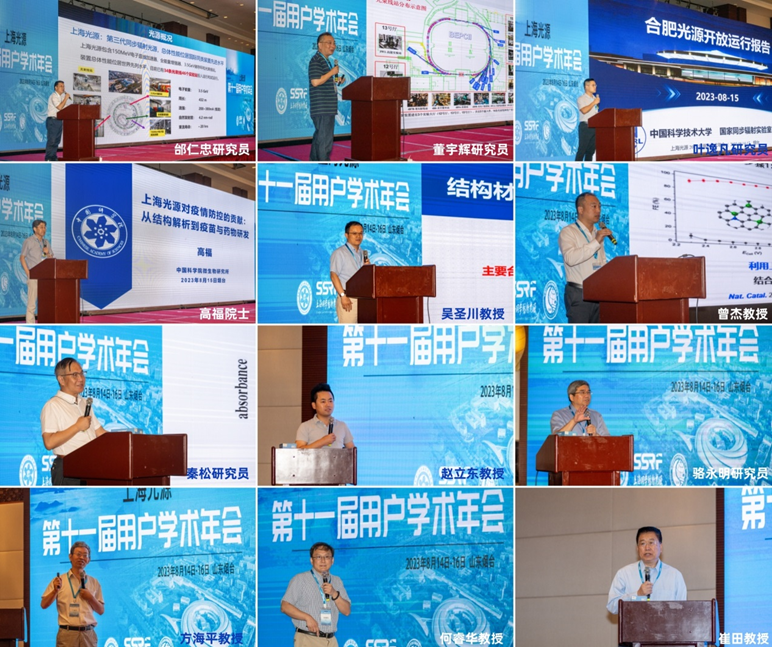News Update
The 11th Annual Meeting of the SSRF Users and the Symposium on the Experimental Applications of the Phase-II Beamline Project was successfully held in Shandong from August 14 to August 17 2023. The four-day Meeting was organized by the Shanghai Advanced Research Institute (SARI) of the Chinese Academy of Sciences (CAS), with Yantai Institute of Costal Zone Research (YIC) of CAS as the co-organizer.
Prof. Tai Renzhong, Vice President of SARI and Executive Deputy Director of Shanghai Synchrotron Radiation Facility (SSRF), presided over the opening ceremony. Speeches were delivered by Prof. Li Yan, Party Secretary of SARI, Prof. Qin Song, Deputy Director of YIC, Prof. Gao Fu, Academician in the Institute of Microbiology of the Chinese Academy of Sciences (IMCAS), and Prof. Zhao Zhentang, Director of SSRF, in which they expressed their congratulations to the opening of the Meeting and their hope for the better development of SSRF.
More than 570 representatives across the country participated in the Meeting. The Meeting contains four sections, with a total of 127 academic reports, including 12 plenary reports, 46 keynote reports, 48 key project defense reports, and 21 user-specific exchange reports.

Acting as a bridge for the participants' scientific cooperation and exchanges, the Meeting presented reports covered the disciplines of chemistry, physics, materials, energy, environment, health and instrumental methods, and attracted 46 user representatives from universities, research institutes and companies to exchange their research results and the latest progress in each research field, giving full play to the important role of SSRF as a comprehensive platform for national scientific and technological innovation. The Meeting also featured a poster presentation and the evaluation of the 48 key SSRF projects, after which SSRF will give support to appropriate projects based on the evaluation results.
Following the 11th Annual Meeting of the SSRF Users, the Symposium on the Experimental Applications of the Phase-II Beamline Project was held. The Project was in the list of the national major scientific and technological infrastructure construction projects in the "Twelfth Five-Year Plan". It aims to build experimental auxiliary systems and 16 new beamline stations, and expand the light source performance. SSRF phase-II has been completed in July 2023 all the process tests and open to users for trial operation. This Symposium was convened to enable users to understand the methods and applications of the relevant beamline stations and experimental auxiliary systems in a timely manner.
The Symposium included 21 reports on four topics of experimental assistance (experimental auxiliary system, big data platform, optical detection technology), diffraction and scattering, imaging, and spectroscopy, which introduced in detail the experimental assistance system of SSRF, the data acquisition and storage system, as well as the scientific objectives, experimental capabilities, and the preliminary application results of the newly-built beamline station. This Symposium has made it easier for SSRF to better utilize the capability of the newly built experimental device and provide a high-level experimental platform in the future.





